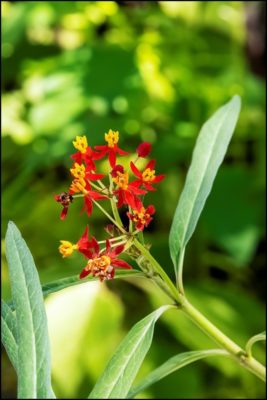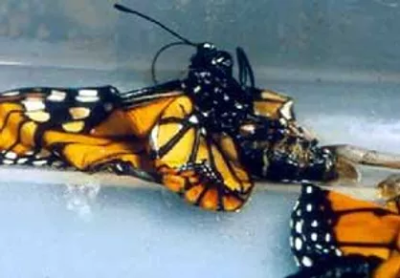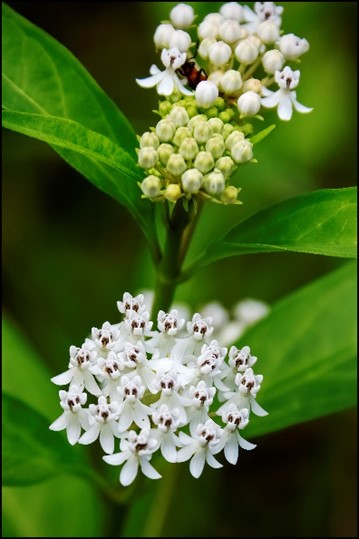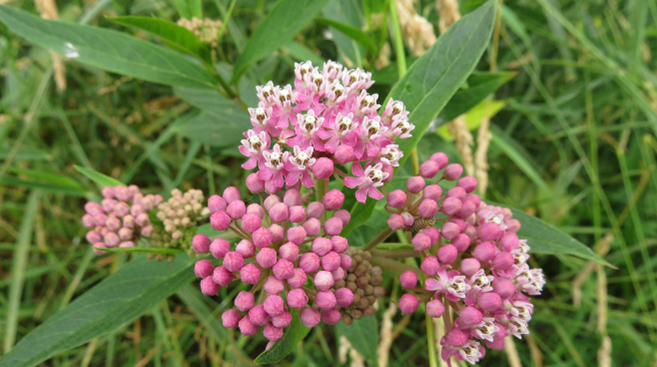Tropical milkweed (Asclepias curassavica) is beautiful and monarchs love it! But is it good for them?

Tropical milkweed (Asclepias curassavica)
Photo by Wade Collier
Tropical milkweed (Asclepias curassavica), which is native to Central American and Mexico, has become prevalent in Florida landscapes in recent years. It is attractive, readily available, easy to grow, and provides food for caterpillars of the imperiled monarch butterfly (Danaus plexippus). However, tropical milkweed can be problematic to our local ecosystems and to the monarch population. Tropical milkweed is not listed as invasive, but is known to spread to natural areas. Because it does not die back in the winter, as our native milkweeds do, it can also disrupt the mating and migration of monarchs.
Another possible threat to monarchs due to climate change involves cardenolides, the chemicals in the leaf tissues of all milkweeds (Asclepias). While these chemicals are toxic to predators, monarchs have evolved to be resistant to it, which in turn protects the monarchs from predation as it is stored in their bodies as well. However, monarchs are only tolerant of cardenolides up to a point, and they may poison themselves if they ingest too much of it. Scientists at LSU and Michigan are studying the higher, and potentially toxic, levels of cardenolides that are produced by milkweed at higher temperatures. Learn more here.
There is also concern over tropical milkweed and the spread of Ophryocystis elektroscirrha (OE), a protozoan parasite. The microscopic spores can infect the milkweed leaves and the monarchs themselves. Infected larvae may not complete their life cycle, or they may emerge as weaker adults. Learn more about OE here. Over 70% of our non-migratory resident monarch population in South Florida is shown to be heavily infected by OE.
In order to combat these issues, it is recommended that everyone plant milkweed species native to Florida. If you do have tropical milkweed, ensure that you cut it back in the fall to help prevent some of the issues discussed above. For more information on native Asclepias and where to purchase them locally, visit the Atlas of Florida Plants and FANN (Florida Association of Native Nurseries) websites.

OE can cause deformed wings in monarchs.
Photo courtesy of https://www.monarchparasites.org/oe
Commonly available from local native plant nurseries:

butterfly weed (Asclepias tuberosa)
Photo by Wade Collier

aquatic milkweed (Asclepias perennis)
Photo by Wade Collier

swamp milkweed (Asclepias incarnata)
iNaturalist Photo by megachile
How many Monarchs & Milkweeds can you find this month? Help EcoFlora document as many monarch butterflies and milkweed plants in Sarasota and Manatee Counties as possible by May 31. Join the project on iNaturalist HERE.
NOTE: We’re interested in observations of both native and non-native milkweed – just indicate whether your milkweeds were wild or captive.
